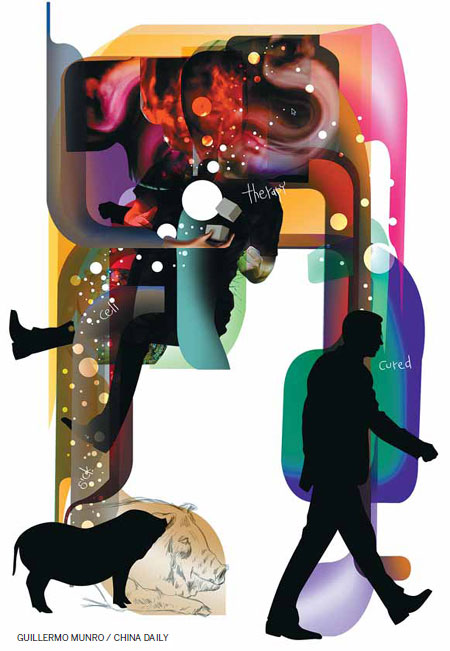

One man's commitment points the way to a brighter future for some patients who may otherwise lose hope, and it's all thanks to the animals he has so carefully nurtured in a little village in China. Liu Zhihua and Feng Zhiwei describe the breakthrough.
These pigs are very famous, and very precious. Their fur is sleek and silky and they nuzzle their feed while listening to music playing in the background. They are China's first donor pigs bred for inter-species transplantation research, and their fame has spread beyond China, throughout the international medical community.
They live in a village two hours' drive from Changsha in Hunan province. It's the first breeding center for donor pigs in Asia and only the second in the world.
"Having a center to raise donor pigs at a large scale is important for research, as now we have a steady donor pig source," says Wang Wei, who is the prime initiator of the breeding center officially commissioned in August.
|
 |
Recommendation: Prettiest organic farmer ever |
Wang, 52, is the director of the radiology department of the No 3 Xiangya Hospital of Central South University in Hunan.
The setting up of the breeding center is the achievement for his team and the world in more than 10 years of research in inter-species transplantation - using animal organs or tissues in humans.
Wang started research in 1995, after he read a paper on the subject. He was enthralled.
"Inter-species transplantation has huge potential for improving fatal and chronic diseases, such as diabetes, because of the shortage of human organs for clinical implants," Wang says.
 |
He says he wanted something beyond radiology - something more innovative and groundbreaking.
"I was young and brave. If I were to choose again, I probably would not have the courage to make the same choice."
Scientists in the United States had already established that pigs were better donors for human transplants than any other animal.
Wang's first goal was the implantation of pigs' hormone-producing islet cells, a procedure that will help cure Type 1 diabetics.
This procedure would make use of his expertise in radiology and interventional treatment. But the human body's immune response or a rejection of pig organs or cells meant he had to find ways to reduce the rejection while keeping the recipient patient's ability to defend his body against other infections.
Click here for more news and reviews on Chinese food, drink, restaurants, cuisine, and recipes from the chinadaily.com.cn.
